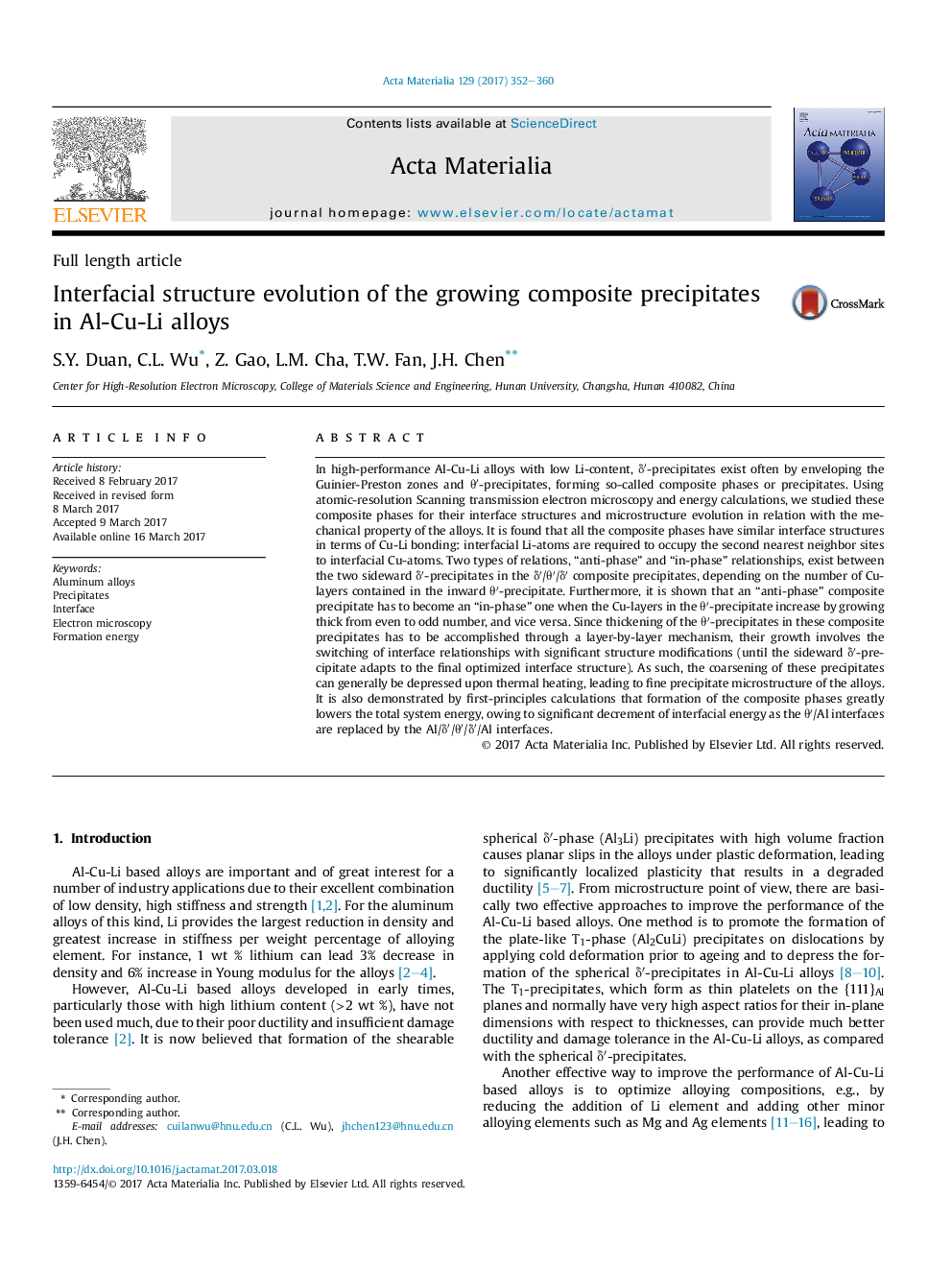| Article ID | Journal | Published Year | Pages | File Type |
|---|---|---|---|---|
| 5436231 | Acta Materialia | 2017 | 9 Pages |
In high-performance Al-Cu-Li alloys with low Li-content, δâ²-precipitates exist often by enveloping the Guinier-Preston zones and θâ²-precipitates, forming so-called composite phases or precipitates. Using atomic-resolution Scanning transmission electron microscopy and energy calculations, we studied these composite phases for their interface structures and microstructure evolution in relation with the mechanical property of the alloys. It is found that all the composite phases have similar interface structures in terms of Cu-Li bonding: interfacial Li-atoms are required to occupy the second nearest neighbor sites to interfacial Cu-atoms. Two types of relations, “anti-phase” and “in-phase” relationships, exist between the two sideward δâ²-precipitates in the δâ²/θâ²/δⲠcomposite precipitates, depending on the number of Cu-layers contained in the inward θâ²-precipitate. Furthermore, it is shown that an “anti-phase” composite precipitate has to become an “in-phase” one when the Cu-layers in the θâ²-precipitate increase by growing thick from even to odd number, and vice versa. Since thickening of the θâ²-precipitates in these composite precipitates has to be accomplished through a layer-by-layer mechanism, their growth involves the switching of interface relationships with significant structure modifications (until the sideward δâ²-precipitate adapts to the final optimized interface structure). As such, the coarsening of these precipitates can generally be depressed upon thermal heating, leading to fine precipitate microstructure of the alloys. It is also demonstrated by first-principles calculations that formation of the composite phases greatly lowers the total system energy, owing to significant decrement of interfacial energy as the θâ²/Al interfaces are replaced by the Al/δâ²/θâ²/δâ²/Al interfaces.
Graphical abstractDownload high-res image (382KB)Download full-size image
